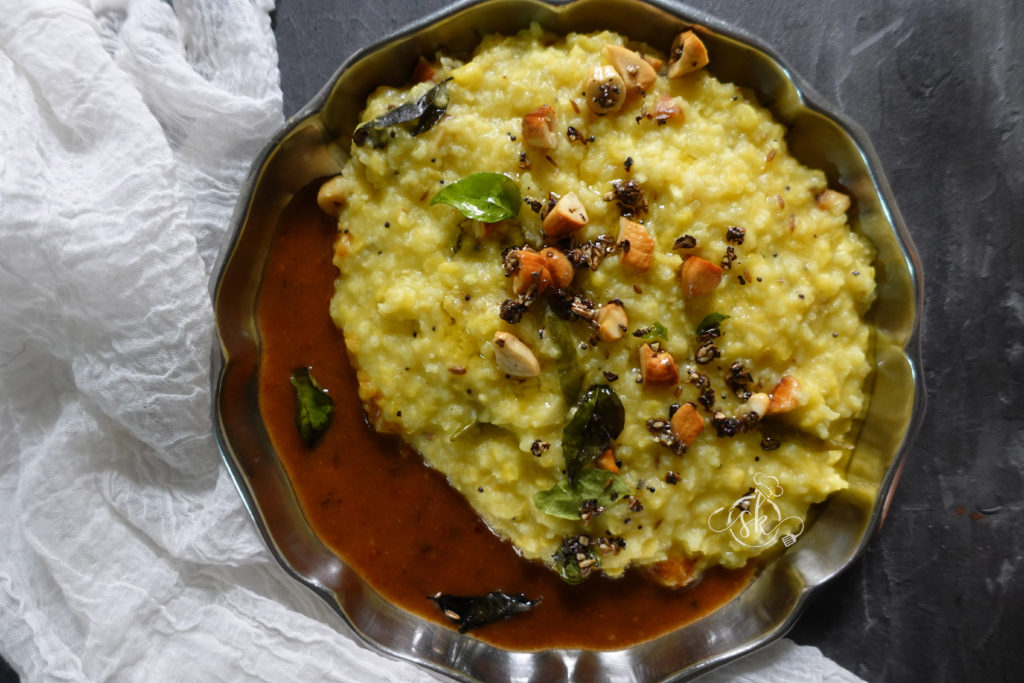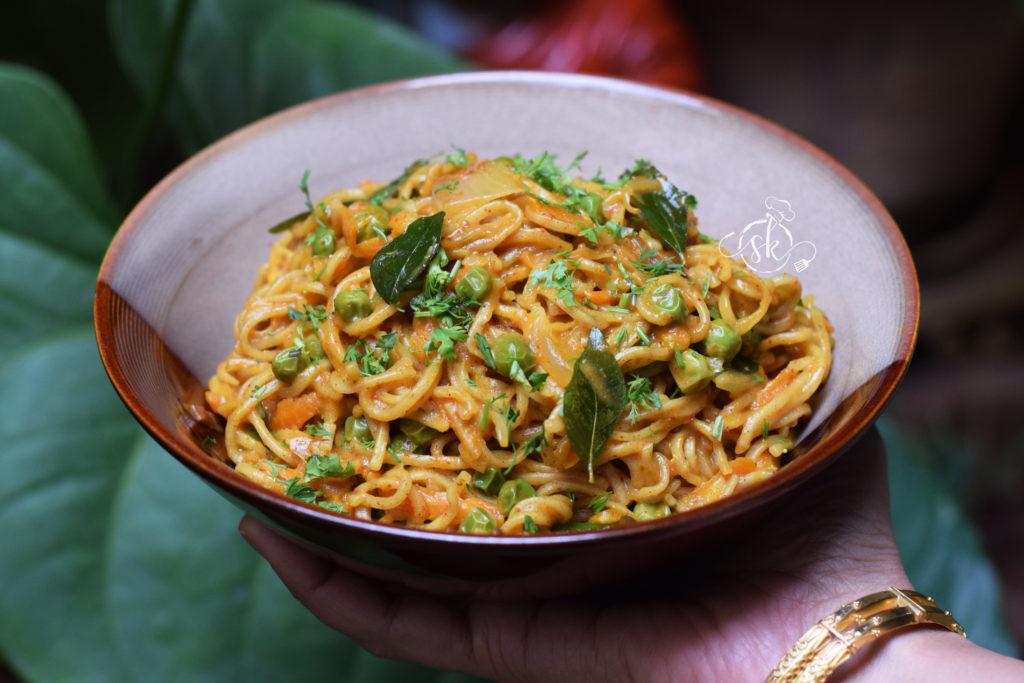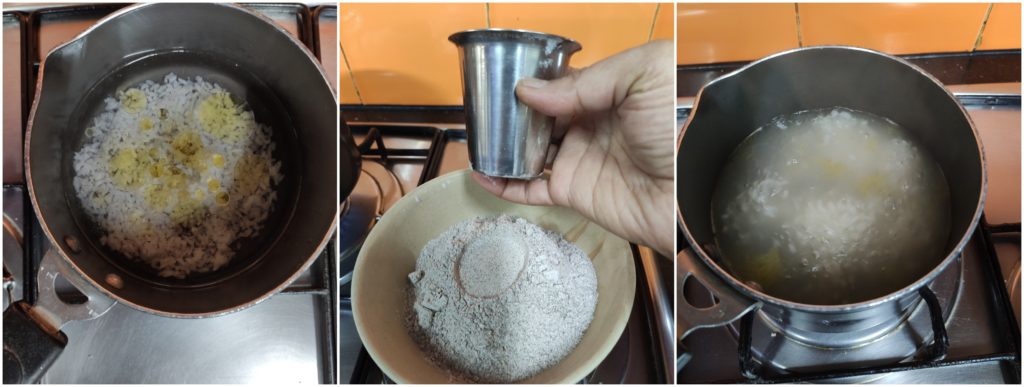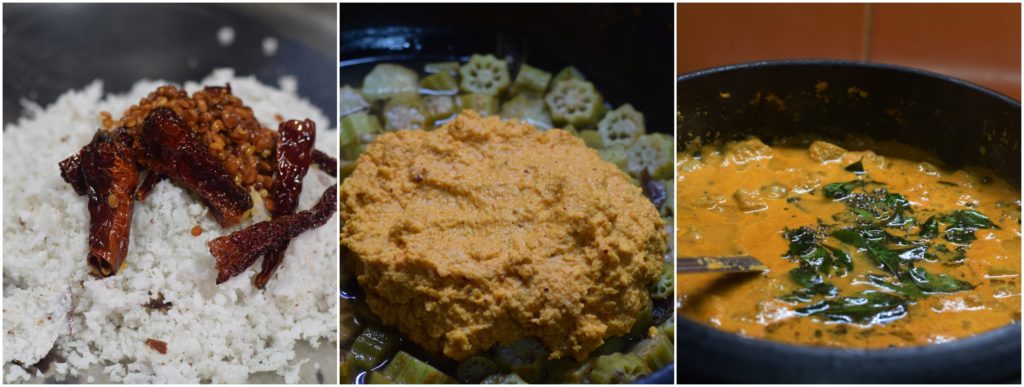Ahh..what to say about humble Pongal? It is one of the comfort food for any South Indian. It is most prevalent in Tamilnadu as a Ven Pongal and a Khara Pongal at Bangalore.
Be it breakfast or as popular Tiffin Item or Lunch or Dinner in a chilly winter season, with added healing properties of ginger, black pepper, hing and loads of ghee to soothe your soul.
It is one of the wholesome, one-pot meals. As the Makarasankranthi festival is around the corner, I would love to share the recipe I follow at home and loved by my family.

Ingredients:
Rice – 1 cup
Moong dal /green gram dal – 1 cup
Ghee – 2 tbl spoons
Cumin – 1 tsp
Hing – ¼ tsp
Green chillies- 2 (slit)
Ginger – 1′ ( julienne)
Curry leaves – 1 spring
Turmeric – 1 tsp
Milk – 1cup
Water – 7 cups
Salt
Fresh coconut gratings – ½ cup
Tempering: Ghee – 1 tbl sp, mustard, cumin- 1 tsp, black pepper – 1 tsp – 2 tsp, curry leaves – 1 spring, chopped cashew nuts – 1 to 2 tbl spoons.
Extra ghee – to serve ( optional)
Method:
-Dry roast yellow moong dal for 2 to 3 minutes. Cool it. Wash rice and dry roasted moong together and soak it for some time, or you can use it directly.

-Take a cooker, add 2 tbl sp ghee, add cumin, hing, green chillies, ginger, curry leaves and turmeric and fry for 2 minutes.
-Now drain the rice and moong dal, add-in, mix everything and add water, milk and boil.

-When water starts boiling, add salt, coconut, close the lid, and cook for three whistles.
-Crush black pepper and cumin by putting them together in a mortar and pastel. Keep it ready.
-After opening the lid, make tempering by heating ghee, splutter mustard, add crushed pepper and cumin, curry leaves, cashew bits and fry until the cashew becomes light brown. Pour over the tempering on ready Pongal.

-Mix everything, serve with tamarind gojju, sambar, Raita or chutney.
NOTE: I usually use Broken rice, which is used explicitly for Pogal and available in all the local Rice traders here in Bangalore.
If it is not available, I would prefer to use Jeeraga samba rice/ small grain rice/ sannakki.




























